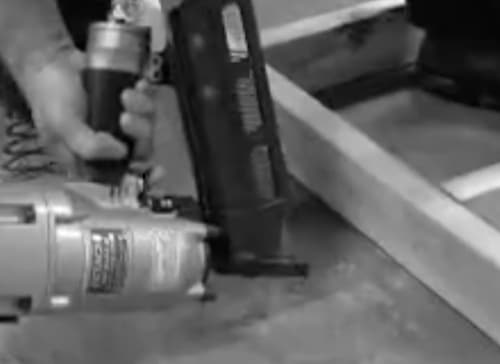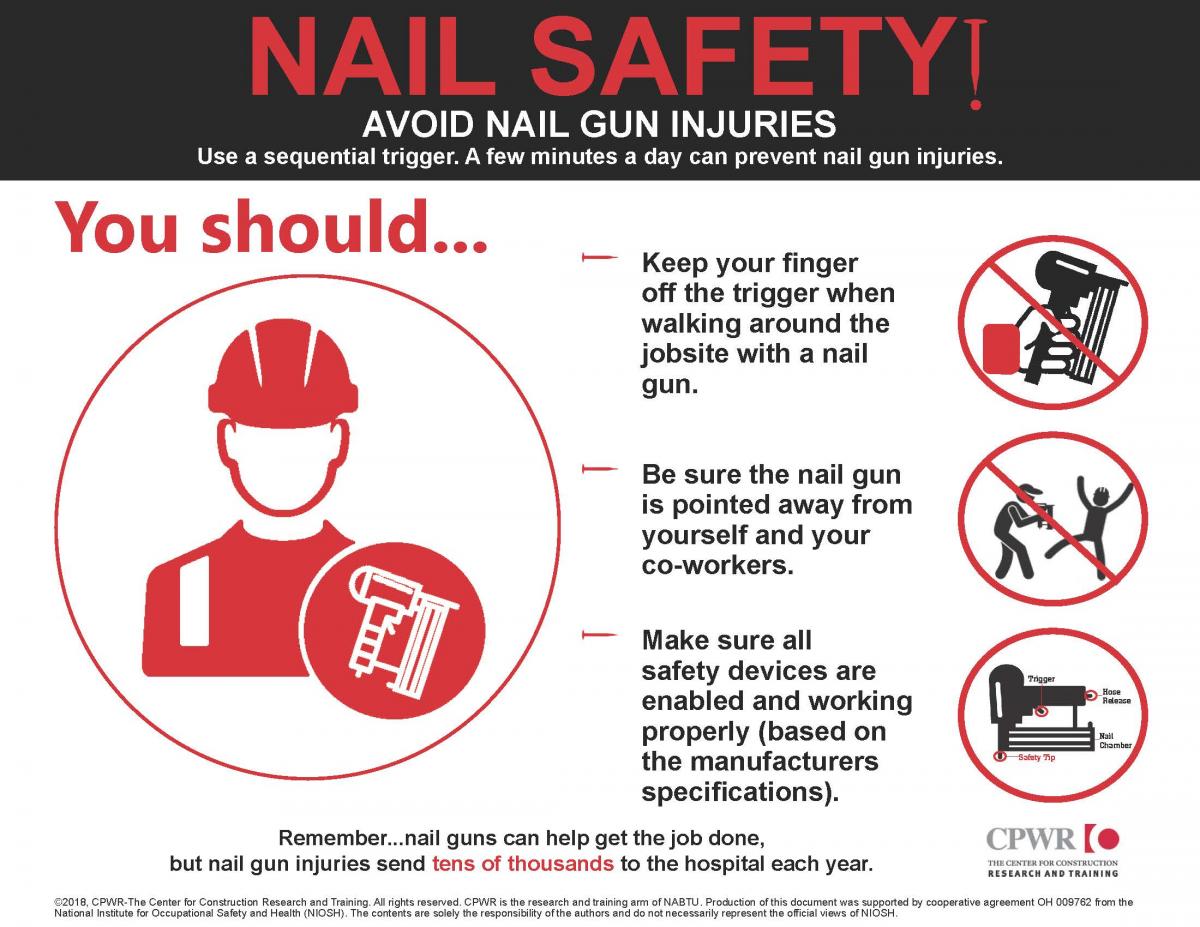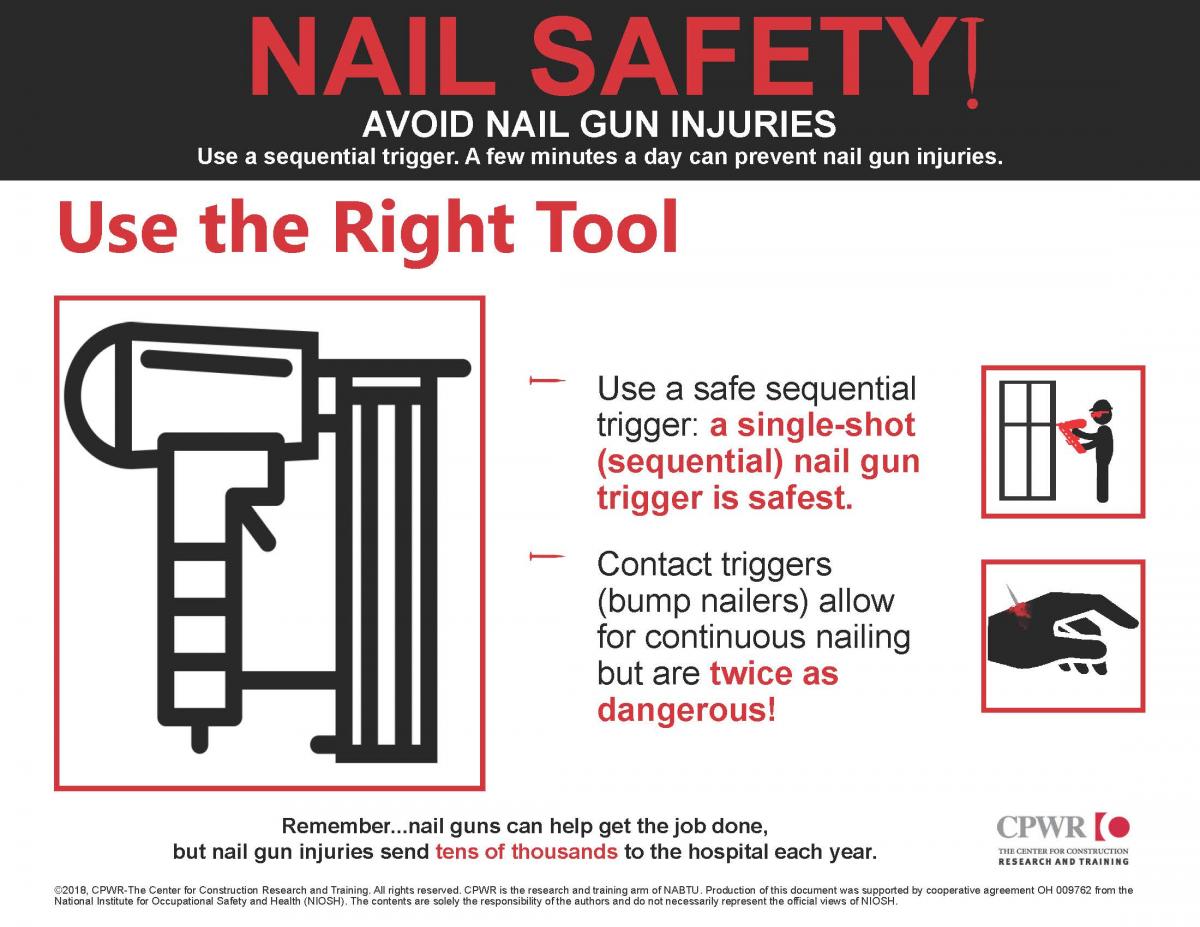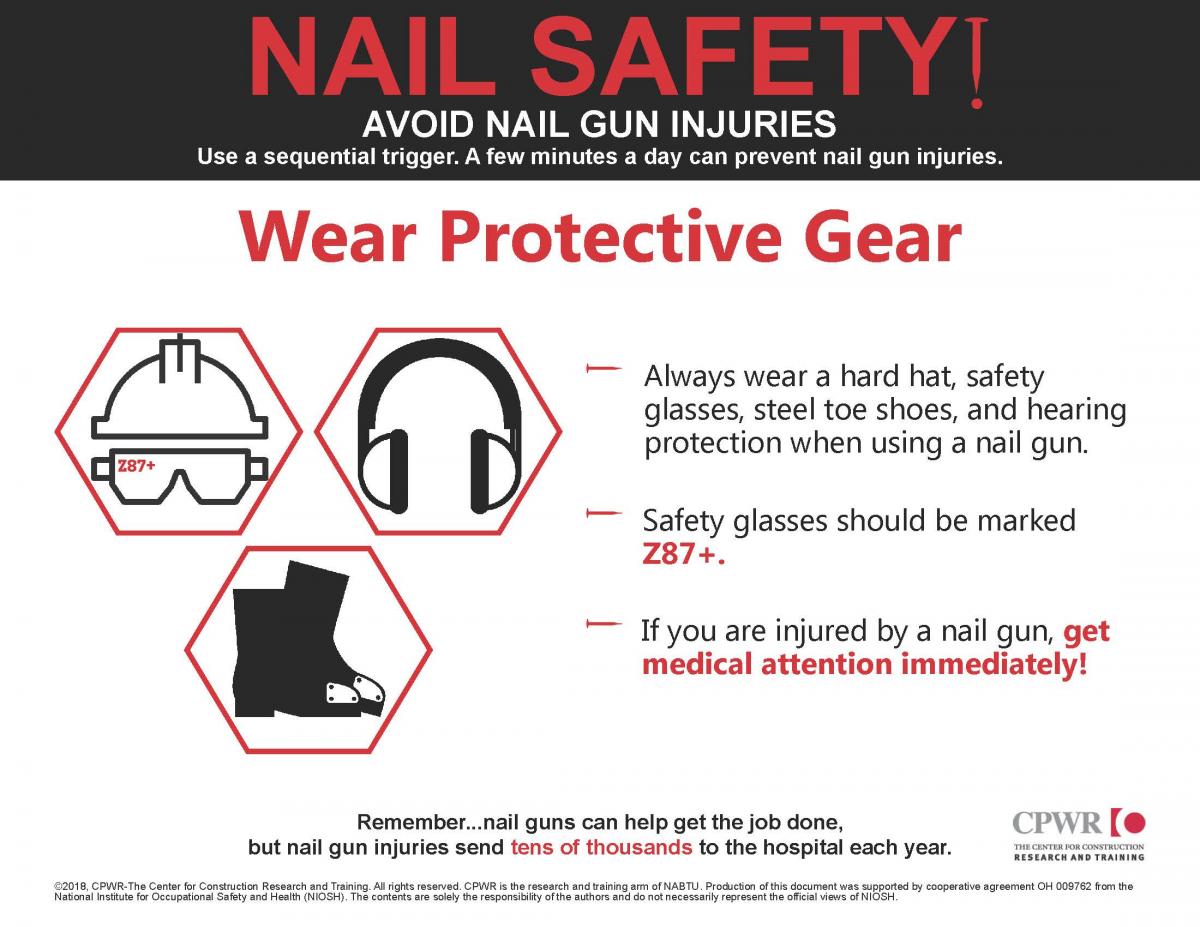Understanding The Risks – Nail Gun Safety
How nail guns work
Nail guns are used for many tasks including framing, roofing, flooring and finishing. Most nail guns are pneumatic—using compressed air—while other models can be powered by electricity, gas, or battery for cordless models. Pneumatic nail guns are typically triggered by one of two mechanisms: contact trip triggers and sequential triggers. While nail gun triggers typically look the same, they can pose significantly different degrees of risk.
- Contact trip trigger mechanisms allow the user to fire the tool at any time the trigger and the nose of the gun — the contact element — are both depressed. This enables “bump nailing” — when the operator depresses the trigger, and bumps the nose of the nailer against a surface, the gun will fire. Research shows that nail guns with contact triggers carry twice the risk of acute injury compared to those with sequential triggers.
- Sequential triggers require the nose of the gun — the contact element — be depressed before the trigger can be pulled. This helps to avoid the inadvertent discharge of nails. Research shows that tools with sequential triggers carry half the risk of acute injury associated with contact trip triggers.
- Dual-action triggers, found in newer models, allow workers to switch back and forth from contact trip to sequential. Confusing the two can lead to injuries.

Understanding the Risk
– How nail guns work
– How they injure
– How to prevent injury
Resources
– Training materials
– Research & related materials
How they get injured
Most nail gun injuries happen due to:
- Accidental or unintended firing, often associated with recoil of the tool after firing, referred to as a “double fire” — second unintended shot
- Holding finger on contact trigger—nail gun nose can inadvertently contact an object and fire
- Airborne nails, ricocheting nails, nail missing work surface or penetrating through work surface
- By-passing safety features and using unsafe work practices
Use these materials to start a discussion about the importance of nail gun safety:
News articles on injuries & fatalities:
- Gun Pins Builder to Floor
- Girl Survives Near-Fatal Accident
- Worker shot in chest by nail gun
- One Millimeter To The Right
- One Wrong Move
- Danger on The Work Site
- Videos:
How to prevent injury
To decrease the risk of injury when using a nail gun, use the following strategies. These strategies and related information are available in the CPWR Hazard Alert: Nail Guns.
- Ask for a nail gun with a sequential trigger mechanism and for personal protective equipment (PPE).
- Do not press the trigger unless the nose of the gun (contact element) is firmly pressed against the work material.
- Never walk around with your finger on the trigger or a full power grip. (See Image 1).
- Never clean or clear jams or adjust a nail gun when it is connected to the air supply.
- Avoid nailing into knots and metal; nails are more likely to ricochet. Dense materials, like laminated beams, are also difficult to nail.
- Never remove or bypass safety devices, triggers, or contact springs.
- Never use a defective tool. If a tool is malfunctioning, it needs to be tagged and taken out of service.
Learn more at CPWR Construction Solutions: Hazard Analysis: Cuts and Punctures from Tools or Materials & Solutions: Sequential Nail Guns and Palm Nailers.

